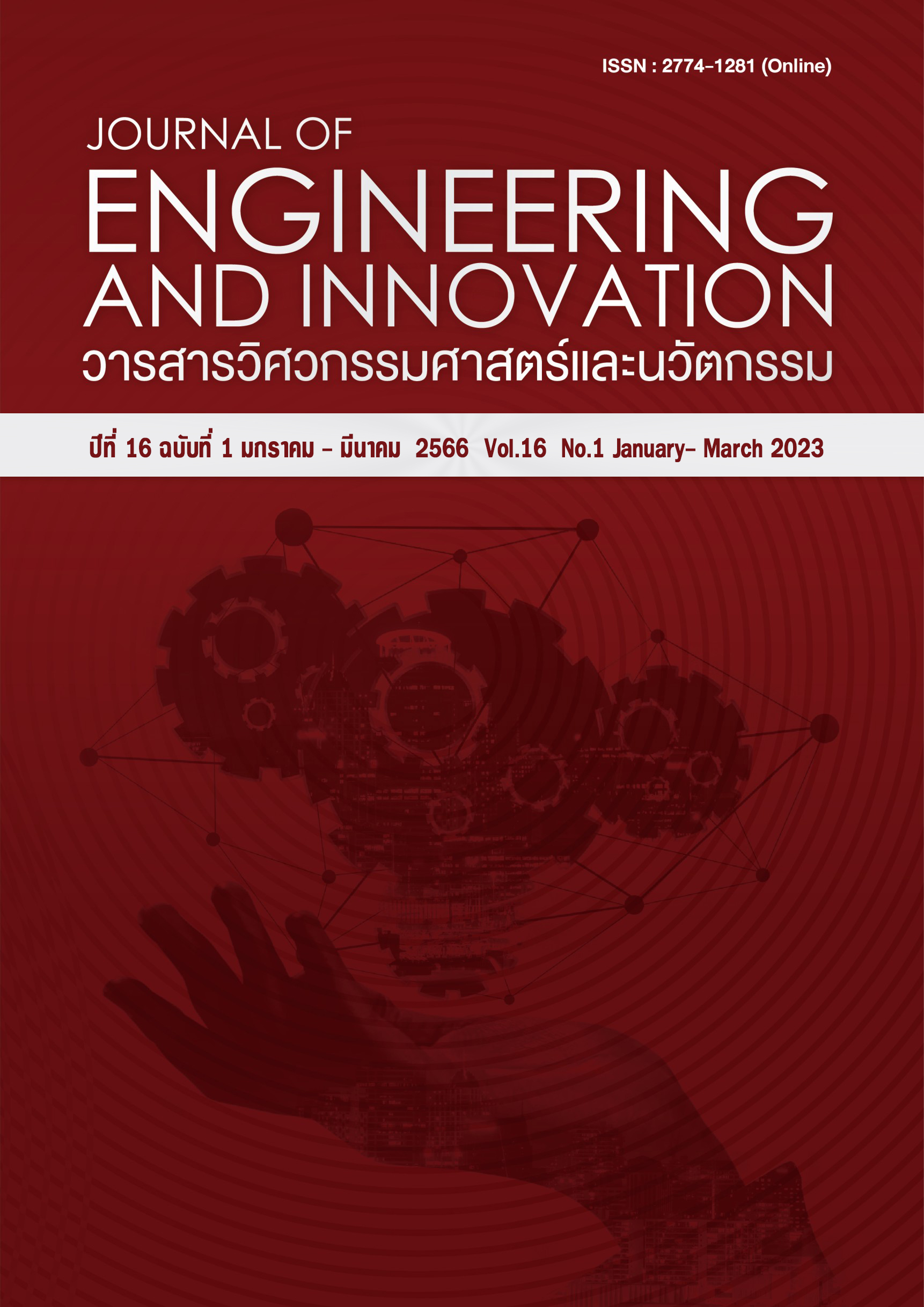Evaluation of Hydraulic Fracturing Phenomena in Earth Dam
Main Article Content
Abstract
Knowledgebase for hydraulic fracturing (HF) in dam is crustal information in expert system for dam internal erosion identification. The saddle dam (Dike 4) of the Sirikit Dam was used in the current case study where is located in the regional geology of metamorphic rock. The intrusion of igneous rock in the area creates foliation by tectonic forces. Consequently, rock foundations have become overturned folds. The case study on dike 4 of geology, field monitoring and Finite Element Method reveals that the foliation of foundation rocks leading to HF phenomena. Hydraulic fracturing shows the initiation when the reservoir water level reaching +148 m. MSL. and progress as RWL. is increased. This behavior was detected by the piezometers installed in the interface of residual soil and phyllite. The pore pressure ratio (PR) between piezometric pressure and reservoir pressure can indicate the degree of HF. Four levels of HF are very likely, likely, unlikely and very unlikely when PR are 1.0-0.8, 0.8-0.6, 0.6-0.3 and 0.3-0.0 respectively. The geometry of foliation, depth of HF from dam crest, elevation head of reservoir water level and modulus of foundation soil and rock can formulate the “Hydraulic Fracturing Index, HFI”. Four similar levels of HF are indicated by HFI of 4.0-2.5, 2.5-1.0, 1.0-0.25 and 0.25-0.0 respectively. HFI is also confirmed on another dam in the same project. Verification and validation can be done using dam data from Teton dam. The validations are agreed to failure modes caused evidently HF. Compilation of these knowledges into decision flowchart can yield the levels of possible risks of hydraulic fracturing in the dam. Three categories of identification are from 1) geology data, 2) pore pressure ratio (PR) and 3) hydraulic fracturing index (HFI). If the results from 3 categories are agreed then the confidence of hydraulic fracturing level is very high.
Article Details
References
Sherard JL, Woodward RJ, Gizienski SF, Cleavenger WA. Earth and Earth- Rock Dams, editors. John Wiley and Sons. New Jersey, 1963. p. 271-353.
Moayed RZ, IZADI E, FAZLAVI M. In-situ stress measurements by hydraulic fracturing method at Gotvand Dam site. Journal of engineering and environment sciences. 2012;36(3): 1104-9.
Wang Jun Jie. Hydraulic fracturing in earth-rock fill dams, editors. China Water and Power Press. John Wiley and Sons. 2014. p. 23-47.
Xiaoxi Men, Jiren Li, Zhihui Han. Fracture Propagation Behavior of Jointed Rocks in Hydraulic Fracturing. Advances in materials science and engineering. 2018 Jul 29;2018: 1155-10. Epub 2018 Jun 14.
Yelin Qian et al. Advances in Laboratory-Scale Hydraulic Fracturing Experiments. Advances in Civil Engineering. 2020 Jul 29;2020: 1155-10. Epub 2020 Jun 30.
Corinne Curt, Richard Gervais. Approach to improving the quality of data used to analyze dams Illustrations by two methods. Journal of Environmental and Civil Engineering. 2013 Oct 17;18(1): 1080-10. Epub 2013 Aug 16.
Filho ML, Diego B, Toscano AE, Barbosa PSF, Salgado RM, Luiz FV Vianna, Barreto MN. Expert System for Dam Assessment and Emergency Detection. editors. flood management. 6th International conference on flood management; 2014 Sep 16-19; Sao Paulo, Brazil; 2014.
The university of new south wales. Risk Analysis for Dam Safety: A Unified Method for Estimating Probabilities of Failure of Embankment Dams by Internal erosion and Piping. Australia. 2009. 446 p.
Kasetsart University. Development of Diagnosis Expert System for Seepage through Medium Scale Dam Foundation. Research center of Infrastructure and sustainable Engineering; 2021 Jan. 354 p. Thai.
Jaworski, Duncan, Seed. An Experimental Study of Hydraulic Fracturing Report. 1979, University of California; 1979.
Mori, Tamura A. Hydrofracturing pressure of cohesive soils. Soils and Foundations. 1987;27(1):.3208-10.
Andersen KH, Rawlings CG. Estimation of hydraulic fracture pressure in clay. Canadian Geotechnical Journal. 1994;31(6).
Chengzeng Yan, Hong Zheng, Guanhua Sun, Xiurun Ge. Combined Finite-discrete Element Method for Simulation of Hydraulic Fracturing. Rock Mechanics and Rock Engineering. 2016;49(4).
Haimson BC, Fairhurst C. Initiation and extension of hydraulic fractures in rocks. Society of Petroleum Engineers Journal. 1967;7(3).
Bauer SJ, Barrow P, Robbins A, Hileman M. Mechanical and Fluid Flow Properties of Basaltic Andesite and Rhyolite Analogue Rocks. editors. Engineering Stanford University. Proceedings of the 42nd Workshop on Geothermal Reservoir Engineering Stanford University; 2017 Feb 13-15; Stanford, California; 2017.

